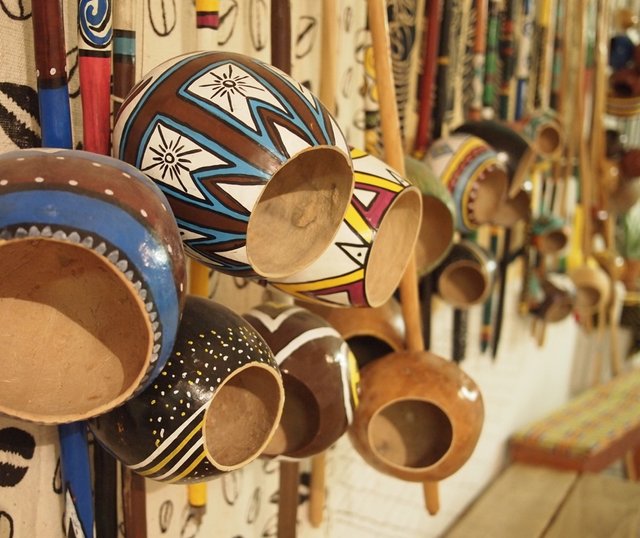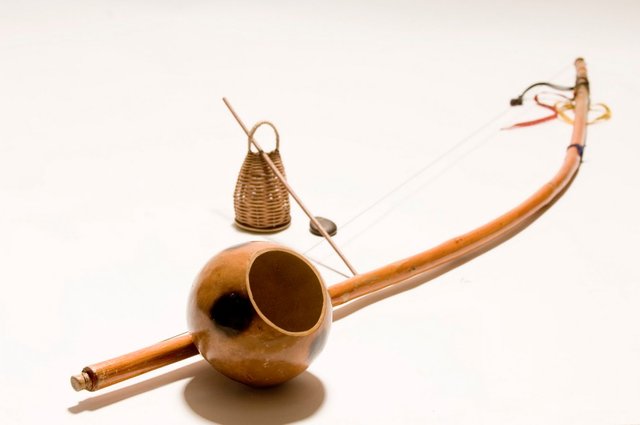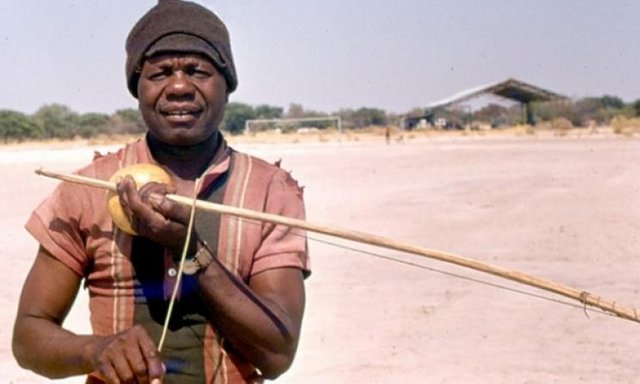A hunter gather's tool in the 21st century!
What a title, but what am I talking about...
One of the first instruments that will encounter when you experience the #AfroBrazilian martial art #capoeira is the #berimbau. It is the most distinctive and misunderstood instrument within the Capoeira universe. At it's basic, the berimbau is a bow that could be made of different material. Here are the most common elements of the berimbau as it is made in #Brazil:
- The long stick, verga, is made of wood from the #biriba tree.
- The steel wire, arame, is a steel string that is predominately pulled from car tires.
- The gourd, cabaca, is a hollowed out gourd resonator that is connected to the two items above.
- The striking stick, baqueta, allows you to strike the arame.
- Stone/coin, pedra/dobrao, is the tone changer that is pressed against the arame for the desired sound.
- The shaker, caxixi, is the bead-filled item that is held in the same hand as the baqueta.
A very fast history of the instrument goes like this. It was brought over by enslaved Africans in several different forms. The form that you see today is most likely an amalgamation of several bowed instruments that are still present in #Africa. Cousins of the instrument appears in other areas that received enslaved Africans.
- #Malunga
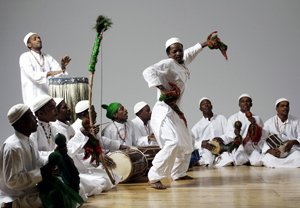
https://search.proquest.com/openview/2d1708f44a65d2faec0bba57240f4e3a/1?pq-origsite=gscholar&cbl=26613
Africa:
#Umuduri
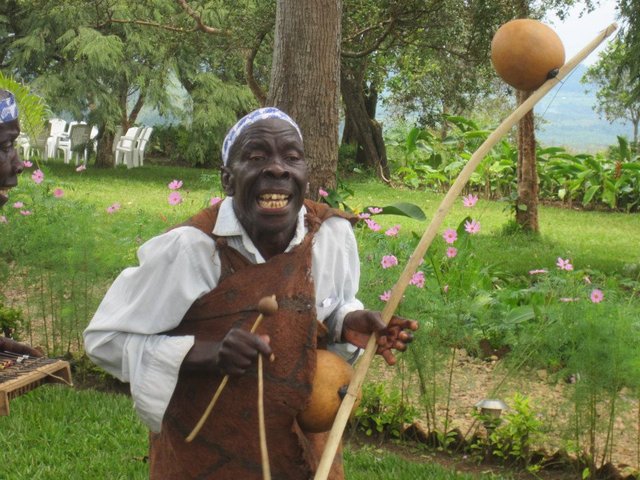
http://music.africamuseum.be/instruments/english/rwanda/umuduri.html#Mbulumbumba

https://books.google.ch/books?id=ZtJKDwAAQBAJ&pg=PA245&lpg=PA245&dq=Mbulumbumba&source=bl&ots=eHHKcLylqc&sig=eteaN-Pf7q5wGMF9Lx0b0Xsj2rY&hl=en&sa=X&ved=2ahUKEwjIkI_TwNTcAhVN1hoKHUaZB6EQ6AEwDnoECAgQAQ#v=onepage&q=Mbulumbumba&f=false#Ombulumbumba
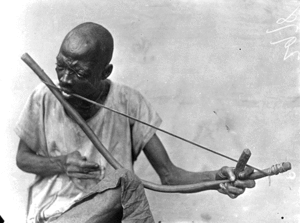
https://books.google.ch/books?id=Sd6SAgAAQBAJ&pg=PT845&lpg=PT845&dq=Ombulumbumba&source=bl&ots=cOcnfbC1l2&sig=9lLHJwEPGNIDl_72Hm23Qj4DUkg&hl=en&sa=X&ved=2ahUKEwibrZ73wNTcAhWOxoUKHU6oDjIQ6AEwBHoECAcQAQ#v=onepage&q=Ombulumbumba&f=false
These are just a few of the bowed instruments found in Africa. There are over 40 different versions of the instruments throughout the continent of #Africa.
So whats this have to do with hunter-gathers? As you look at the locations where these instruments are clustered, there is always a strong hunter-gather group present in the area. These groups typically have expert players amongst them. In Burundi and Rwanda, the Hutu are the traditional players of the Umuduri, but it is the #Twa that teaches and makes the instrument (I have two on my wall at home). As we venter back further in time, we can see the lifestyle of hunter-gather groups afforded some downtime when they weren't hunting. The instruments were modified and stories and instructions were given to a melodic tone. These groups are found in the #Congo and in #Mozambique, areas where the #Portuguese would eventually show up. Guam and India may still be escaping you at this point. Yes, Portuguese explorers went to Guam and India as well. In both instances, the Portuguese brought enslaved Africans from all the areas that contained versions of the Musical bow.
So now when you see the high energy, deceptive martial arts. Note that the instrument that controls it all have a long history that spawns from the time that instrument was between life and death and the center of entertainment for our traveling ancestors. I hope you found this interesting. Stop in and add your thoughts and views on this fascinating subject.
- Ameer
Oh yeah, if you are in DC or NY, go check out my two favorite Capoeira spots.
NY: http://joaogrande.org/
DC:http://universalcapoeira.org/
